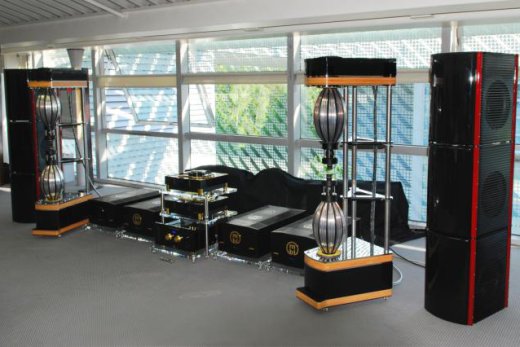Does anyone know or understand how the MBL speaker is able re-create that "you are there" feeling?
Hope ya'll don't mind if I take a shot. I'm not an MBL owner, so consider this just armchair quarterbacking.
Here's the measurements page from Stereophile's review:
http://www.stereophile.com/content/mbl-radialstrahler-101e-mkii-loudspeaker-measurements
At the risk of stating the obvious:
- The first-arrival ("on-axis") frequency response of the Radialstrahler is decent but not outstanding.
- The step response is decent, but clearly the system is not optimized in the time domain. Nor is the spectral decay plot especially impressive - in fact, it's rather hashy.
- The lateral dispersion plot is a freakin' monster. Yes it's a true omni in the horizontal plane, and even the vertical dispersion is remarkably smooth.
So... everything special that this speaker is doing is happening in the reverberant field. In particular:
1) The reverberant field is very well energized. The Radialstrahler puts far more energy out into the reverberant field than the vast majority of speakers on the market.
2) That reverberant field is spectrally correct. It has essentially the same spectral balance as the first-arrival sound.
3) Because the radiation pattern is so wide - 360 degrees - the reverberant field is very diffuse.
4) When set up as recommended (well away from the walls), the onset of that very rich reverberant energy happens after a significant time delay.
Okay, now let's look at ways in which the reverberant energy of a live performance in a good recital hall differs what we normally find at home:
1) In a good recital hall, the reverberant field is well energized, far moreso than what most speakers do in most home listening rooms.
2) In a good recital hall, the reverberant field is spectrally correct - that is, it has essentially the same spectral balance as the first-arrival sound.
3) In a good recital hall, the reverberant field is quite diffuse.
4) In a good recital hall, the onset of that nice rich reverberant field happens after a considerably longer time delay than we normally get in a home listening room.
5) In a good recital hall, the reverberant energy decays more slowly than in most home listening rooms.
So... the MBL's do far better than the vast majority of speakers in mimicing the sort of soundfield we find in a good recital hall. Imo these differences matter, a lot, and that's why the MBLs stand out from the crowd.
One final comment about reflections done right (and I think we can give the Radialstrahlers credit for doing reflections right, given decent room acoustics): Floyd Toole cites studies in his book that indicate reflections done right actually increase the clarity and intelligibility of speech, and therefore presumably have the same effect on music. He theorizes that the ear/brain system is better able to decipher complex sounds when given multiple "looks" via reflections. I would say the Radialstrahlers put that theory to the test and end up validating it.
So does this speaker have weaknesses?
I've heard that they totally lose it when placed in close proximity to kyptonite.
Last edited:


